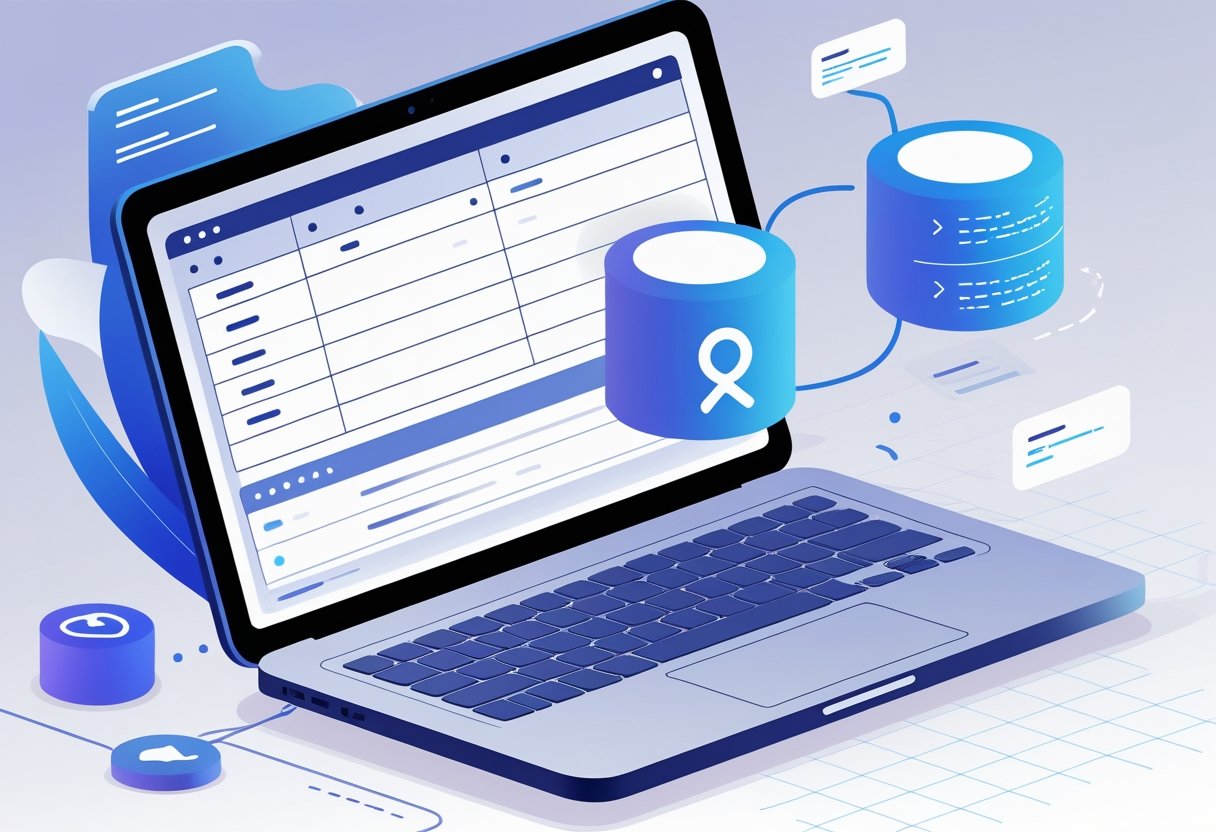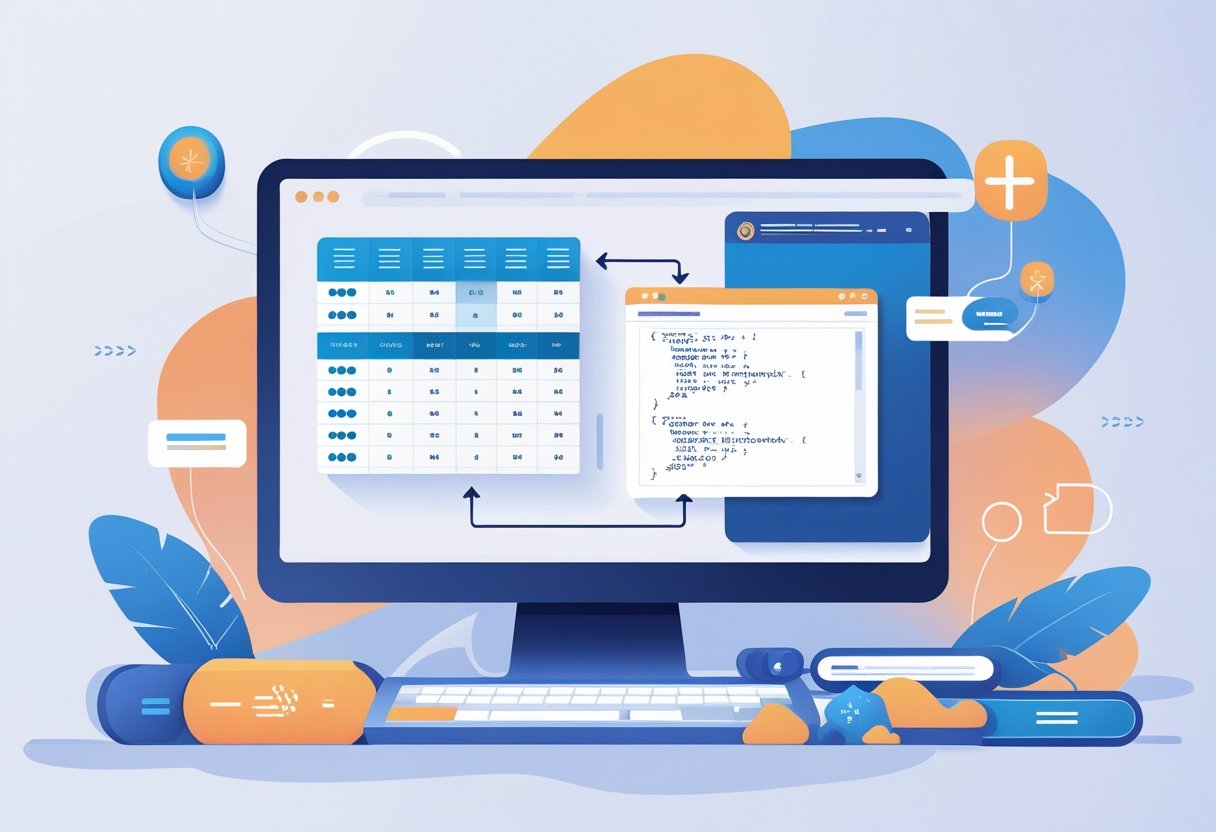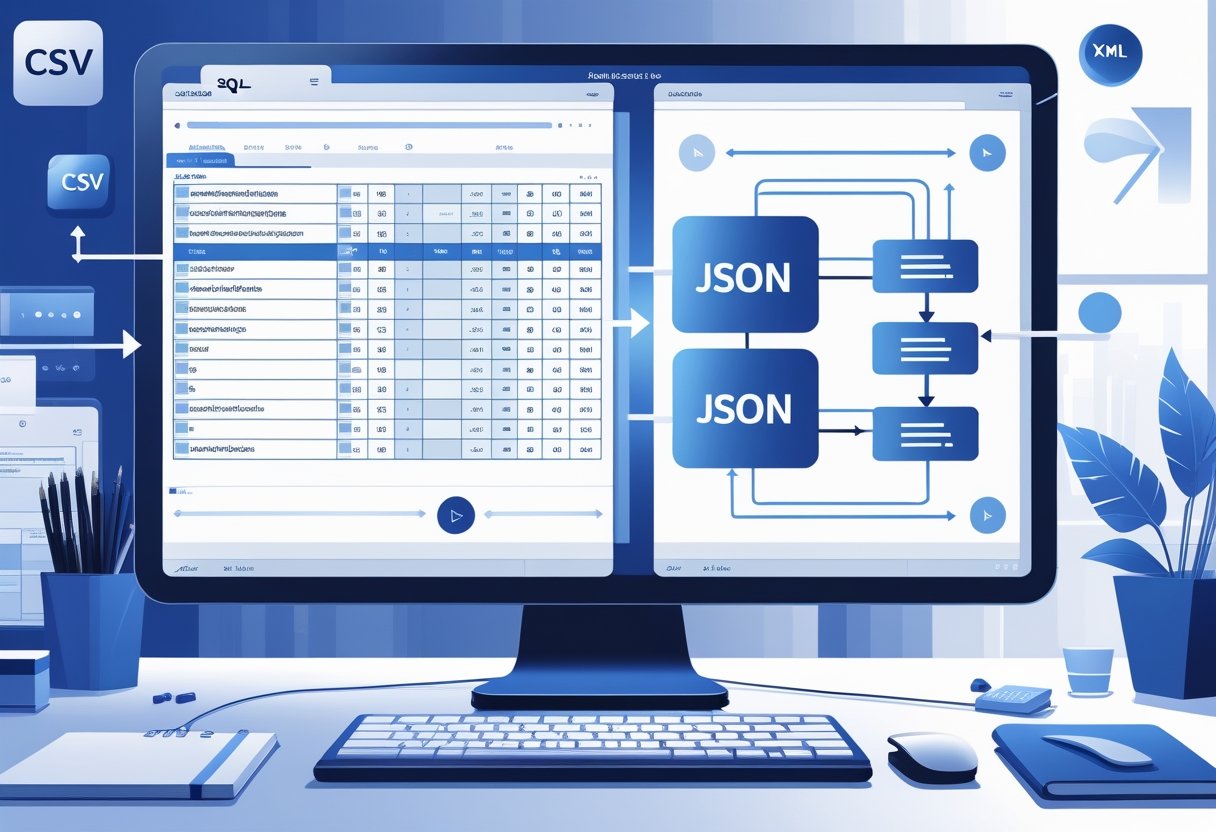JSON has become the go-to format for storing and exchanging data in modern web applications, and SQL databases have evolved to handle this flexible data format alongside traditional relational data. SQL Server’s built-in JSON support allows developers to store, query, and manipulate JSON documents directly within their database without needing separate NoSQL solutions. This integration opens up powerful possibilities for handling semi-structured data while maintaining the benefits of relational database systems.

Understanding how to work with JSON in SQL can transform how developers approach data storage and retrieval challenges. SQL Server provides robust JSON functions that enable users to extract values, modify documents, and convert between JSON and traditional table formats seamlessly. These capabilities make it possible to combine the flexibility of document-based storage with the power of SQL queries.
This guide covers everything from basic JSON concepts to advanced querying techniques, helping readers master the essential skills needed to leverage JSON effectively in their SQL Server environments. Whether dealing with API data, configuration files, or complex hierarchical information, the techniques outlined will provide practical solutions for real-world scenarios.
Key Takeaways
- JSON support in SQL Server enables storing and querying semi-structured data alongside traditional relational data
- Built-in functions like JSON_VALUE and JSON_QUERY allow extraction and manipulation of JSON data within SQL queries
- Developers can seamlessly convert between JSON format and table structures for flexible data integration
Core Concepts of JSON in SQL

JSON (JavaScript Object Notation) serves as a bridge between traditional relational databases and modern NoSQL concepts. SQL databases like SQL Server, MySQL, and PostgreSQL now offer native JSON support, allowing developers to store and query semi-structured data alongside relational data.
What Is JSON and Why Use It in SQL?
JSON stands for JavaScript Object Notation. It is a lightweight text format that stores data in key-value pairs and arrays.
JSON looks like this:
{
"name": "John",
"age": 30,
"skills": ["SQL", "Python", "JavaScript"]
}
Why developers use JSON in SQL databases:
- Flexible schema: JSON handles varying data structures without schema changes
- API integration: Most web services use JSON for data exchange
- Complex data storage: JSON stores nested objects and arrays in single columns
- Faster development: No need to create multiple related tables for simple hierarchical data
Traditional relational data requires fixed table structures. JSON data adapts to changing requirements without database modifications.
Modern SQL databases support JSON data types natively. This means developers can combine structured relational data with flexible semi-structured data in the same database.
JSON Support in SQL Server and Other SQL Databases
SQL Server introduced JSON functions in 2016. These functions let developers parse, query, and modify JSON data using standard SQL commands.
Major SQL databases with JSON support:
| Database | JSON Support | Key Features |
|---|---|---|
| SQL Server | Yes (2016+) | JSON functions, native json data type |
| MySQL | Yes (5.7+) | JSON data type, JSON functions |
| PostgreSQL | Yes (9.2+) | JSONB data type, advanced operators |
| Oracle | Yes (12c+) | JSON functions, JSON collections |
Core JSON functions in SQL Server:
- JSON_VALUE(): Extracts single values from JSON text
- JSON_QUERY(): Gets objects or arrays from JSON
- JSON_MODIFY(): Updates JSON values
- OPENJSON(): Converts JSON arrays to table rows
SQL Server 2025 adds new features like CREATE JSON INDEX and JSON_CONTAINS function. These improvements make JSON queries faster and more powerful.
The JSON functions work with JavaScript-like syntax for accessing nested data. Developers use dollar sign notation like $.info.address.city to reach specific values.
Storing JSON Data in SQL Tables
SQL databases store JSON data in text columns or dedicated JSON data types. The storage method affects query performance and functionality.
Storage options:
- VARCHAR/NVARCHAR columns: Standard text storage for JSON
- Native JSON data type: Binary format with better performance
- Compressed storage: Optimized space usage for large JSON documents
SQL Server’s native json data type offers several advantages. It parses documents during storage for faster reads. Updates modify individual values without rewriting entire documents.
Example table with JSON column:
CREATE TABLE Products (
ID int PRIMARY KEY,
Name varchar(100),
Specifications json
);
The Specifications column can store different product attributes without schema changes. One product might have color and size. Another might have weight and dimensions.
Best practices for JSON storage:
- Use native JSON types when available
- Index frequently queried JSON paths
- Keep JSON documents reasonably small (under 8KB recommended)
- Validate JSON format using ISJSON() function
JSON support combines NoSQL and relational concepts in the same SQL Server database. This hybrid approach gives developers flexibility while maintaining ACID properties and SQL query power.
Working with JSON Data in SQL Server

SQL Server provides built-in functions to extract, validate, and modify JSON data stored in varchar or nvarchar columns. The database includes specialized operators like OPENJSON for converting JSON arrays into table rows and functions such as JSON_VALUE for retrieving specific values from JSON documents.
Supported JSON Functions and Operators
SQL Server offers four primary functions for working with JSON data. The ISJSON function validates whether a string contains properly formatted JSON syntax.
JSON_VALUE extracts scalar values from JSON documents using path expressions. This function returns single values like strings, numbers, or boolean data.
JSON_QUERY retrieves objects or arrays from JSON text. Unlike JSON_VALUE, it returns complex JSON structures rather than individual values.
JSON_MODIFY updates specific values within JSON documents. Developers can add, update, or delete properties without rewriting entire JSON strings.
The OPENJSON function converts JSON arrays into relational table format. This rowset function transforms JSON collections into rows and columns for standard SQL queries.
SQL Server’s JSON functions use JavaScript-like syntax for referencing nested properties and array elements.
Creating and Managing JSON Columns
JSON data in SQL Server gets stored in varchar or nvarchar columns. No special data type declaration is required for basic JSON storage.
Developers can create tables with JSON columns using standard CREATE TABLE syntax:
CREATE TABLE Products (
ID int PRIMARY KEY,
Name varchar(100),
Specifications nvarchar(max)
);
The nvarchar(max) data type accommodates large JSON documents. Smaller JSON strings can use fixed-length varchar columns for better performance.
SQL Server 2025 introduces a native json data type that stores documents in binary format. This new type offers improved compression and faster read operations.
JSON columns can be indexed using computed columns. Create computed columns that extract frequently queried JSON values, then add indexes to those columns.
Validating and Modifying JSON Data
The ISJSON function returns 1 for valid JSON and 0 for invalid formats. Always validate JSON data before processing to prevent runtime errors.
SELECT * FROM Products
WHERE ISJSON(Specifications) = 1;
JSON_MODIFY enables targeted updates within JSON documents. The function accepts three parameters: the JSON string, the path to modify, and the new value.
UPDATE Products
SET Specifications = JSON_MODIFY(Specifications, '$.color', 'blue')
WHERE ID = 1;
Path expressions use dollar sign notation to navigate JSON structures. Use brackets for array indices and dot notation for object properties.
Working with JSON in SQL Server requires understanding path syntax for accurate data extraction and modification. Invalid paths return NULL values rather than generating errors.
Multiple modifications require chaining JSON_MODIFY functions or using nested calls within single UPDATE statements.
Querying and Outputting JSON in SQL

SQL Server provides powerful tools to convert table data into JSON format through the FOR JSON clause, with AUTO and PATH modes offering different approaches to structure output. These methods handle complex data relationships and array structures seamlessly within T-SQL queries.
Generating JSON Output with FOR JSON AUTO
The FOR JSON AUTO clause automatically creates JSON output based on the structure of your SELECT statement. This method generates nested JSON objects when tables have relationships.
SELECT CustomerID, CompanyName, City
FROM Customers
FOR JSON AUTO
FOR JSON AUTO uses table and column names to determine the JSON structure. When you join multiple tables, it creates nested objects automatically.
The AUTO mode works best for simple queries with clear relationships. It requires minimal configuration and produces clean JSON output.
Key benefits of FOR JSON AUTO:
- Automatic nesting based on table relationships
- Simple syntax with no manual configuration
- Perfect for basic JSON conversion needs
Azure SQL Database and SQL Server 2016+ support this functionality. The FOR JSON clause formats SQL results as JSON text that applications can easily consume.
Customizing Output with FOR JSON PATH
FOR JSON PATH gives you complete control over JSON structure through dot notation in column aliases. This approach lets you create custom nested objects and control property names.
SELECT
CustomerID as 'customer.id',
CompanyName as 'customer.name',
City as 'address.city'
FROM Customers
FOR JSON PATH
The PATH mode uses aliases with dots to create nested structures. You can build complex JSON hierarchies by using multiple levels of nesting.
PATH mode advantages:
- Custom property names through aliases
- Nested object creation with dot notation
- Flexible output structure control
This method works perfectly when your application needs specific JSON formats. You can match existing API structures or create optimized data layouts.
The PATH option uses dot-separated aliases to nest objects in query results. This gives developers precise control over the final JSON structure.
Handling JSON Arrays in Queries
JSON arrays in SQL output require specific techniques to group related data correctly. You can create arrays using subqueries or by structuring your main query appropriately.
SELECT
CustomerID,
CompanyName,
(SELECT ProductName FROM Products WHERE CustomerID = c.CustomerID FOR JSON AUTO) as 'products'
FROM Customers c
FOR JSON PATH
Subqueries with FOR JSON create array properties within your main JSON structure. This technique handles one-to-many relationships effectively.
Array handling methods:
- Subqueries with FOR JSON for nested arrays
- JOIN operations that create repeated parent records
- GROUP BY with string aggregation functions
T-SQL provides multiple ways to structure JSON arrays based on your data relationships. The choice depends on performance needs and output structure requirements.
Advanced querying techniques allow you to extract, query, and format JSON arrays directly within your SQL queries for optimal performance.
Integrating JSON with Traditional Data Formats

Modern databases need to handle both JSON and traditional data types together. SQL Server provides tools to combine JSON with relational tables and compare it with XML processing methods.
Combining JSON and Relational Data
SQL Server allows developers to mix JSON data with regular table columns in the same database. This approach gives teams flexibility when working with different data types.
Storage Options:
- Store JSON in VARCHAR(MAX) or NVARCHAR(MAX) columns
- Use computed columns to extract JSON values
- Create indexes on computed columns for better performance
The OPENJSON function converts JSON data into rows and columns. Developers can use OPENJSON in FROM clauses to treat JSON like a regular table.
SELECT j.name, j.age, r.department
FROM employees r
CROSS APPLY OPENJSON(r.json_data)
WITH (name VARCHAR(50), age INT) j
JSON_VALUE and JSON_QUERY functions extract specific pieces from JSON columns. JSON_VALUE gets single values while JSON_QUERY retrieves objects or arrays.
Teams should validate JSON data using the ISJSON function before inserting it. This prevents errors and keeps data clean.
Comparing JSON and XML Handling in SQL
SQL Server treats JSON and XML differently even though both store structured data. Each format has specific functions and performance characteristics.
Key Differences:
| Feature | JSON | XML |
|---|---|---|
| Storage Type | Text columns | Native XML data type |
| Query Functions | JSON_VALUE, JSON_QUERY | XQuery methods |
| Indexing | Computed columns only | Direct XML indexes |
| Validation | ISJSON function | XML schema validation |
XML has a dedicated data type in SQL Server database systems. This gives XML built-in validation and specialized indexing options that JSON lacks.
JSON functions are simpler to use than XQuery syntax. Most developers find JSON_VALUE easier to learn than XML path expressions.
XML supports namespaces and complex schemas better than JSON. However, JSON works faster for simple data structures and web applications.
Both formats can join with relational data using similar techniques. The choice depends on application needs and team skills.
Frequently Asked Questions
JSON support in SQL databases offers native data types, built-in functions for data manipulation, and seamless conversion between relational and JSON formats. Understanding validation tools and formatting techniques helps developers work effectively with semi-structured data.
What are the benefits of using JSON data types in SQL databases?
The native JSON data type provides more efficient storage and faster performance compared to storing JSON as text. SQL Server’s JSON data type stores documents in binary format, which optimizes compression and reduces storage space.
Reads become more efficient because the database already parses the document during storage. Writers can update individual JSON values without accessing the entire document.
The native JSON type maintains full compatibility with existing code. Applications see no difference between scalar table columns and JSON column values.
How can you query and manipulate JSON data within SQL?
SQL databases provide built-in functions for working with JSON data. The ISJSON function tests whether a string contains valid JSON format.
JSON_VALUE extracts scalar values from JSON strings using path expressions. JSON_QUERY retrieves objects or arrays from JSON data.
JSON_MODIFY allows developers to change specific values within JSON strings. These functions use JavaScript-like syntax for referencing nested properties.
The OPENJSON function converts JSON arrays into table format. This enables standard SQL queries on JSON data using SELECT, WHERE, and ORDER BY clauses.
What is the process for converting a SQL query result to a JSON format?
The FOR JSON clause formats SQL query results as JSON output. Developers add this clause to SELECT statements to delegate JSON formatting to the database server.
PATH mode with FOR JSON uses dot-separated aliases in the SELECT clause to create nested objects. The database automatically structures the output based on these aliases.
AUTO mode generates JSON structure based on the SELECT statement structure. This approach requires less manual configuration but offers fewer customization options.
Can you provide an explanation of a simple JSON object structure in the context of SQL data storage?
A JSON object consists of key-value pairs enclosed in curly braces. Keys are strings, while values can be strings, numbers, booleans, arrays, or nested objects.
JSON documents can contain hierarchical data with multiple levels of nesting. Arrays hold multiple values of the same or different data types.
SQL databases store JSON objects in dedicated columns alongside traditional relational columns. This hybrid approach combines structured and semi-structured data in the same table.
What tools are available for validating JSON data, and how do they integrate with SQL?
The ISJSON function validates JSON format directly within SQL queries. This built-in function returns 1 for valid JSON and 0 for invalid data.
SQL databases can enforce JSON validation through check constraints. These constraints automatically reject invalid JSON data during INSERT or UPDATE operations.
JSON functions provide strict mode options that require specific properties to exist. The strict prefix in path expressions ensures data integrity.
How can one efficiently format and view JSON data that is stored in a SQL database?
SQL Server Management Studio and other database tools display JSON data with syntax highlighting. These tools automatically format JSON for better readability.
The JSON_QUERY function extracts formatted JSON fragments from stored data. This approach maintains proper JSON structure when retrieving nested objects or arrays.
OPENJSON transforms JSON data into tabular format for easier analysis. Developers can specify column types and paths to create structured views of JSON content.




